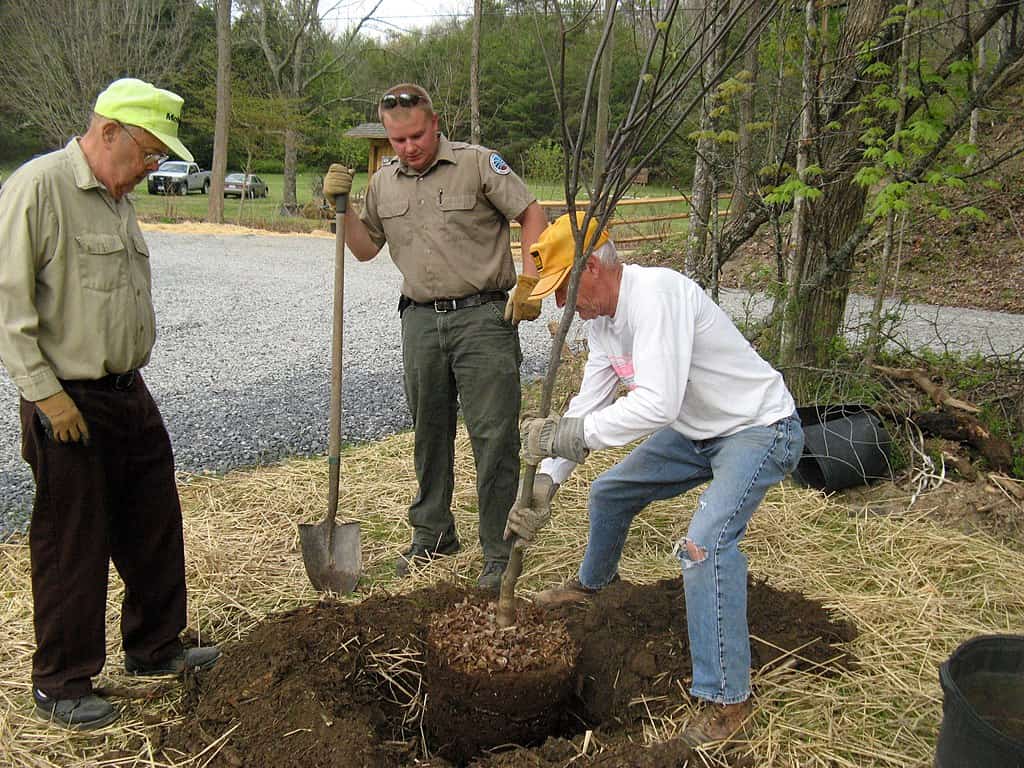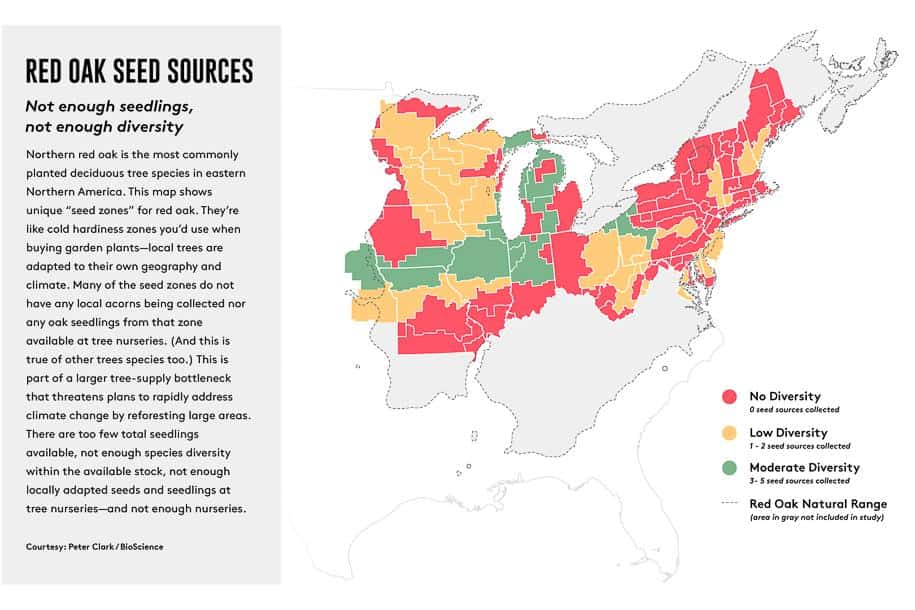Planting trees is a cost-effective strategy to mitigate climate change. Trees cultivated on a large scale absorb carbon dioxide (CO2), a greenhouse gas, through photosynthesis. The US wants to plant one billion trees this decade, with funding from the federal government.
However, getting there may not be very easy. According to a new study, there just aren’t enough seedlings to go around for that to happen.

A study from the University of Vermont found efforts to plant trees in the US face difficulties due to a lack of seedlings and a limited diversity of species. The researchers analyzed over 600 plant nurseries across 20 northern states and found that only a small part of them grow and sell seedlings in the volume needed for reforestation programs.
“Trees are this amazing natural solution to a lot of our challenges, including climate change. We urgently need to plant many millions of them,” study author Tony D’Amato said in a news release. “But what this paper points out is that we are woefully underserved by any kind of regional or national scale inventory of seedlings to get the job done.”
A seedgling bottleneck
In recent years, fires have caused widespread disasters across US woodlands. Numerous trees and large areas of forest were destroyed. Forest Service arborists say it’s hard to even match the replanting to the rate at which trees are destroyed.
The REPLANT Act seeks to address this, providing funding for the Forest Service to reach the billion trees target by 2030.
But the new study shows a bottleneck that could affect these efforts. Less than 10% (56) of the plant nurseries studied grow and sell seedlings in sufficient amounts for reforestation efforts. Out of these, only 14 were government owned.
There was another problem: you can’t just plant anything anywhere. You need specific seedlings for specific local conditions. There just aren’t enough seedlings from species that could adapt to local conditions.
Forest nurseries tend to keep a limited inventory of a few species, prioritizing those of a higher commercial value for timber production (a $16 billion industry) over the species needed for conservation and ecological restoration. Many nurseries also didn’t have locally adapted tree stocks available, the researchers found.

Solving this won’t be easy
One notable example is red spruce. This species has suffered a lot. For decades, pests, deforestation, and climate change have affected it. However, in their study, the researchers found only two tree nurseries that had this specific tree in stock. Only 800 red spruce seedlings were commercially available last year, enough to reforest less than one hectare, they added.
“The world is thinking about a warming climate—can we plant towards that warming climate? We know we’re losing ecologically important species across North America and around the world. So, the goal is: can we restore these trees or replace them with similar species? It’s a powerful idea,” Peter Clark, study author, said in a new release.
The researchers argue that we need big increases in seedling production and diversity at the nurseries if the US is to achieve its planting targets. They recommend a series of steps, from improved policy and financing to better training and expanded research. They warned government agencies lack clear policies about tree species and genetics.
“Given the existing (and growing) reforestation backlog, declines in nursery infrastructure, and complex needs for diverse seeds and seedlings, it is likely that substantially more public investment in the form of grants, loans, and cost-share programs will be needed to reinvigorate, diversify, and expand forest nurseries,” they wrote.
The study was published in the journal BioScience.






